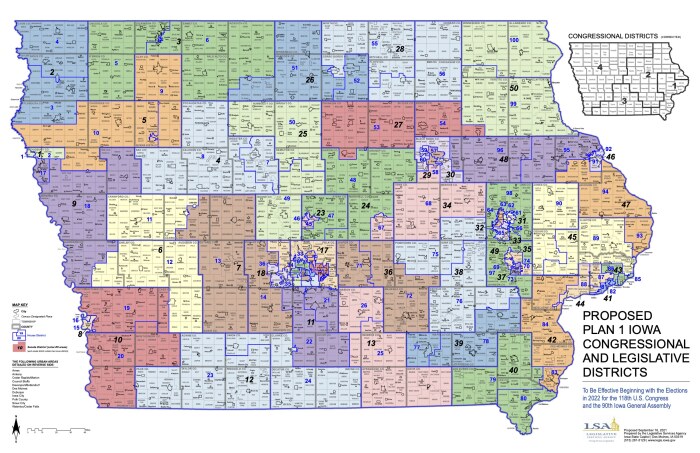Iowa’s Temporary Redistricting Advisory Commission reported to the Iowa legislature on September 27 about public feedback on the first redistricting plan offered by the nonpartisan Legislative Services Agency.
In contrast to the last four redistricting cycles, the five-member commission did not recommend that state lawmakers accept or reject the proposal when they convene for a special session on October 5.
State law requires the commission to organize at least three public hearings where Iowans can provide feedback on the redistricting plan. Then the members must report “promptly” to the legislature on “information and testimony received at the hearings, or otherwise presented to the commission.”
This year’s report included a link to videos of the hearings held virtually on September 20, 21, and 22, as well as dozens of pages of written comments submitted to the commission, which mostly supported approving this set of maps. The commission also reproduced a few social media posts about the LSA proposal and the analysis Evan Burger published on this website.
Iowa Code doesn’t require the redistricting advisory commission to recommend any course of action, but in past cycles, such reports have encouraged lawmakers to vote for or against the plan. This year, the report merely says, “The Commission acknowledges that a majority of Iowans who expressed an opinion to the Commission are in favor of Iowa’s redistricting process and the first proposed redistricting plan.”
In 1981, the first year Iowa used the current process, the commission voted 3-2 to recommend that lawmakers reject the first plan drafted by what was then called the Legislative Services Bureau. The Republican-controlled House and Senate did so, and also rejected the second plan, eventually approving the third plan without amendment. Governor Robert Ray signed those legislative and Congressional maps into law.
The advisory commission voted 4-1 in 1991 to recommend passage of the first redistricting proposal. The Democratic-controlled House and Senate did so, and Governor Terry Branstad signed the legislation.
In 2001, the commission voted 3-2 to recommend that lawmakers reject the first plan. The GOP-controlled House and Senate voted down that proposal and passed the second nonpartisan proposal, which Governor Tom Vilsack signed.
For the first time in 2011, the commission reached a unanimous conclusion: accept the LSA’s first plan. The GOP-controlled House and Democratic-controlled Senate approved the maps by large bipartisan majorities, and Branstad signed them into law.
Republicans now hold a 59-40 majority in the Iowa House and a 32-18 majority in the Senate. House Speaker Pat Grassley and Senate Majority Leader Jack Whitver have not disclosed whether they will encourage their caucuses to vote for the current proposal on October 5. House Minority Leader Jennifer Konfrst and Senate Minority Leader Zach Wahls have said the legislature should approve the first nonpartisan maps.
Top image: First map of Congressional and legislative districts proposed by Iowa’s nonpartisan Legislative Services Agency.

